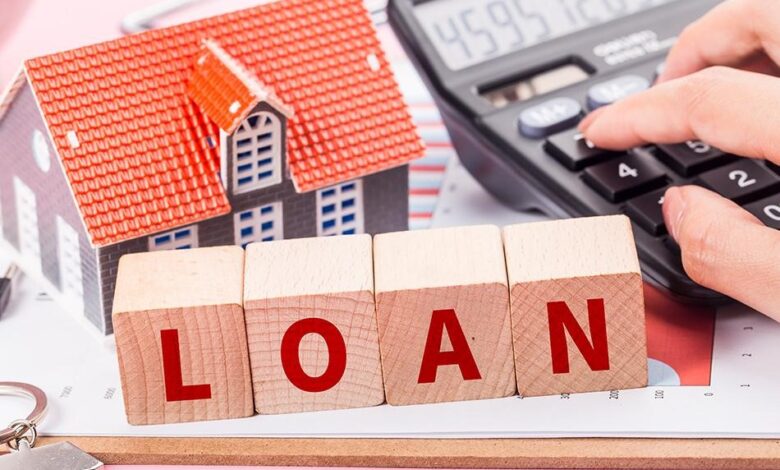Different Types Of Home Loans & How To Close Them Successfully

Learn about the different types of home loans and a checklist for loan closure.
Home loans enable individuals to purchase, construct, or expand houses without draining their savings. Choosing the right loan can help you manage EMIs, get affordable interest rates, and long-term financial stability. Factors like interest rates, tenure, and additional charges play a crucial role in determining affordability. Selecting a loan that doesn’t align with your financial situation can lead to unnecessary financial strain and higher payments. Continue reading to learn about the various home loans available in India and tips on managing them properly.
Different Types of Home Loans & How to Close Them Successfully
Types of Home Loans
Banks provide various types of home loans to fulfil different housing requirements. Knowledge about these types ensures the borrower selects the most appropriate one according to their financial condition and property requirements.
Regular Home Loan
This type of loan is offered to purchase a ready-to-move-in or an under-construction property. Based on the applicant’s eligibility, it can fund 75-90% of the property price. Interest rates differ in the case of fixed and floating interest loan types. The tenure of the loan also differs, with some banks offering up to 30 years. Lenders inspect income, working conditions, credit rating, etc, while approving the loan.
Home Construction Loan
People constructing a house on a plot of land they own can get a home construction loan. Unlike a normal home loan, the loan disbursal is done in stages, depending on the construction progress. The lender requires title documents of the property, construction plans, and an expense estimate for approval. Borrowers must meet eligibility requirements such as steady income, good credit, and adherence to the lender’s construction timeline.
Home Improvement Loan
This house loan assists the occupants in enhancing, renovating, or restoring their current house. Borrowers can use the loan for various purposes like electrical repairs, painting, plumbing, or structural alterations. The loan amount depends on the cost of renovations, and the repayment period can be up to 15 years (depending on the lender). Interest rates are typically equivalent to standard home loans but are subject to variation according to the lender’s policy.
Home Extension Loan
A home extension loan is ideal for homeowners who are constructing additional rooms or floors or making structural alterations to their existing property. Property valuation and approval of extension plans may be needed during the approval process. Repayment terms are flexible, and tenures of the loan can be up to 20 years with some lenders. Proof of income and property documents are required from the borrowers. Other documentation requirements also vary with lenders.
Plot Loan / Land Purchase Loan
This is for people purchasing a residential plot to construct a house in the future. Unlike conventional house loans, plot loans carry lower LTV rates at around 75% – 80% of land value. They carry marginally higher interest rates and should ideally have construction commencement within a specific period. Income, as well as credit score conditions, should be fulfilled for the borrower for loan approval.
Balance Transfer Home Loan
A balance transfer home loan allows the borrower to shift their existing loan to another lender with lower interest rates or more convenient terms. This reduces EMI costs and interest expenditure. The eligibility is determined by loan repayment history, credit rating, and outstanding loan amount. The process involves closing the old loan and starting a new loan with the selected lender.
NRI Home Loan
Non-resident Indians (NRIs) are eligible for getting home loans to buy a house in India. To qualify, NRIs must meet certain eligibility parameters, such as providing proof of foreign income and job stability, as well as original documents, such as an NRI account information and visa details. The repayment tenure of this loan is generally 10 to 30 years, with marginally greater rates of interest compared to resident Indian loans.
Joint Home Loan
A joint house loan enables two or more persons, usually family members or spouses, to apply jointly for a home loan. Combining the incomes of joint applicants enhances loan eligibility since it enhances repayment ability. Both joint applicants can also enjoy tax savings as both of them can claim deductions under Sections 24(b) and 80C of the Income Tax Act. Eligibility would be based on the co-applicants’ income history and payment behaviour.
Managing Your Home Loan Efficiently
Effective home loan management is necessary for timely repayment and facilitates smooth loan closure. Although various home loans are designed for various purposes, adherence to some financial principles can assist borrowers in staying on track.
Choose a Suitable Home Loan
Factors such as interest rates, tenure, and repayment options should be compared across lenders to help arrive at a decision. It is advisable to also check on these hidden costs. Loan processing fees typically vary between 0.5% to 2% of the loan amount depending on the type of loan. Some lenders may also charge prepayment penalty for part payment (prepayment charges are not allowed by RBI for floating rate loans). Many lenders charge foreclosure fees if you close the home loan before the end of its tenure.
Plan for Your Repayments
The borrower must pick a suitable amount of EMI that is more affordable for their monthly budget so that they can pay on time. The auto-debit facility can also prevent late or missing payment. Making part-payment for the loan can be done, whenever possible, to reduce the interest burden and shorten the loan tenure or lower the EMI.
Monitor the Loan Statements
Regularly verifying loan statements ensures that there has not been a wrongful deduction of EMI and helps find out hidden charges, if any. The borrower should check to ensure that all payments are duly reflected, and question any discrepancies such as missed payment reflection, wrong loan balance, etc, immediately. Keeping track of the outstanding balance can also help you set your own financial plans for prepayment or early closure.
Be Prepared for Loan Closure
Closely tracking the repayment schedule prevents any surprises on home loan closure. Storing all copies of documents related to the loan in a safe place will facilitate any transaction in the future so as not to get embroiled in a legal complication.
How to Successfully Close a Home Loan
Closing a home loan implies more than paying the last EMI. A proper closure ensures that the property is free from any legal obligations or financial charges concerning the loan. Here is a checklist for home loan closure:
- Completion of Final Loan Repayment: Before applying for loan closure, the borrower must ensure that all EMIs have been paid in full, including any additional charges such as late payment penalties or early closure fees. Even a small outstanding amount can delay the closure process.
- Get a No Objection Certificate (NOC): NOC from the lender testifies that the loan has been repaid in full and the bank has no claim on the property. The borrower has to apply for this document formally and in writing; it usually takes 7- 10 days for the lender to process the application.
- Get Back Original Property Documents: The lenders hold the original property documents as collateral when a home loan is disbursed. The same needs to be collected by the borrower post loan closure and should include the sale deed, loan agreement, title deed, and other registered documents.
- Update Property Records: All records concerning ownership of the property must be updated once the loan is paid back. This will require informing the local municipal authorities of the loan closure, and the removal of the lien entered in favour of the lender from that record. In the case of a mortgaged property, the borrower will have to get a lien release document called a no-lien certificate from the bank.
- Credit Score Updation & Confirmation of Loan Closure: Loan closure must be communicated to credit bureaus like CIBIL and Experian to ensure that the borrower’s credit report reflects that the loan was repaid in full. A successfully completed loan ensures creditworthiness and increases the chances of a better acquisition of future loans. After a few months, the borrower may request an updated credit report from the bureau to assess the correction and maintain its good credit position.
Conclusion
The borrower must look out for the right type of home loan based on the property they want to buy. Each loan option comes with its own interest rates and terms. After the loan is approved and disbursed, the borrowers can create a repayment schedule and ensure timely payment of EMIs. Regular EMI payments will ensure that the loan will be completely paid off at the end of the loan tenure. Thereafter, borrowers must follow the right procedure to close the loan and get full ownership of the house, free from any liabilities.
Add Business Connect magazine to your Google News feed






